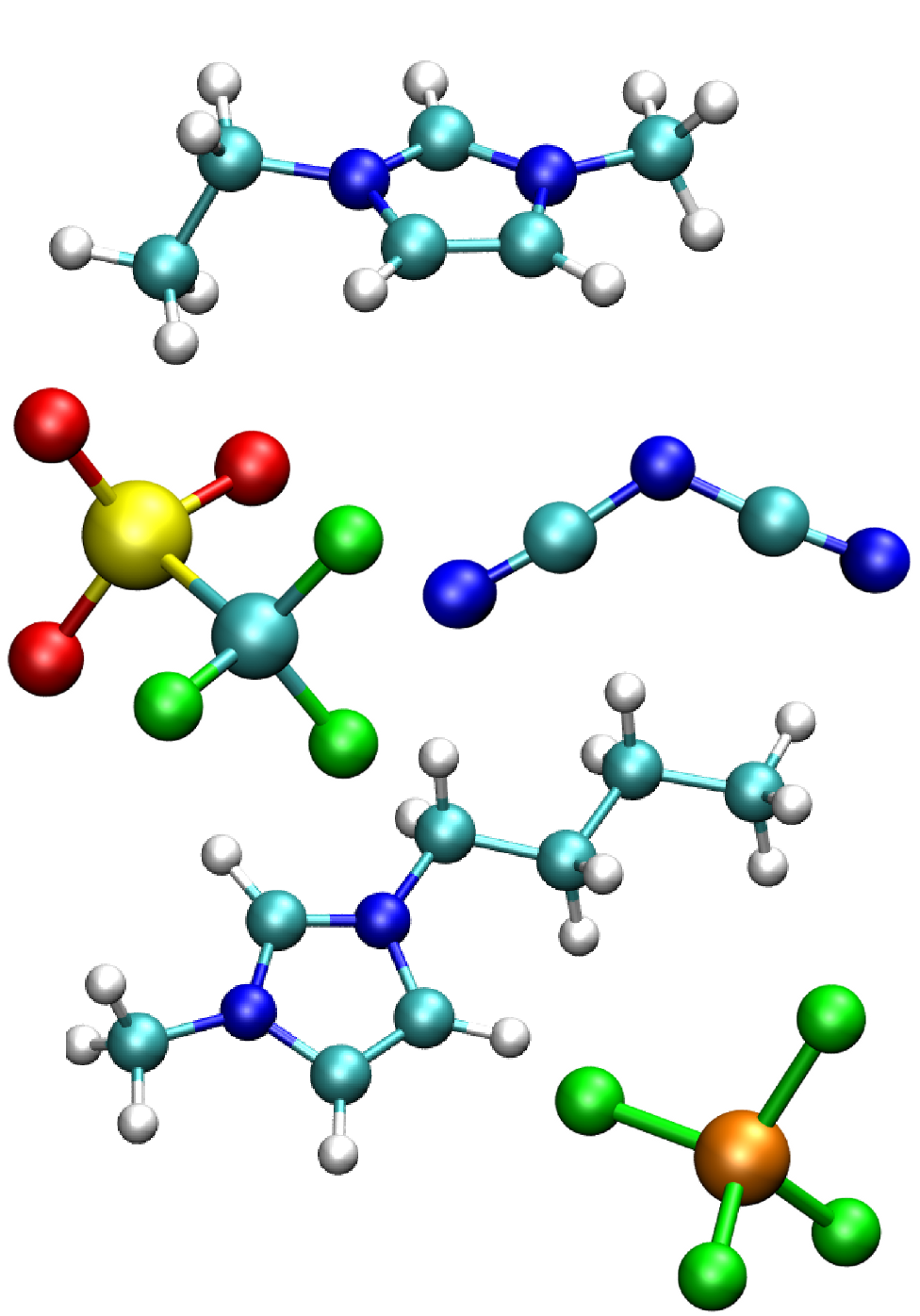Solvent molecules
 Water is the most important biomolecular solvent. Depending on the
scientific interest, several full-atomistic water models (e.g. TIP3P, SPC/E) as
well as polarizable water (e.g. SWM4, SWM6) and coarse-grained descriptions (e.g. BMW)
are available.
Water is the most important biomolecular solvent. Depending on the
scientific interest, several full-atomistic water models (e.g. TIP3P, SPC/E) as
well as polarizable water (e.g. SWM4, SWM6) and coarse-grained descriptions (e.g. BMW)
are available.
 Molecular ionic liquids are a fascinating class in the large
field of soft matter which attraced significant scientific and industrial interest in the past decade.
These organic salts have melting points below 100°C, are usually non-flammable and possess low vapor pressures.
Molecular ionic liquids are a fascinating class in the large
field of soft matter which attraced significant scientific and industrial interest in the past decade.
These organic salts have melting points below 100°C, are usually non-flammable and possess low vapor pressures.
Their observed translational and rotational dynamics, however, contrasts with the picture
of a quasi-crystalline system since a pronounced molecular mobility is found.
Steric and electrostatic anisotropy of both cations and anions as well as their difference
in size and shape are an important sources of counteraction.
Ionic liquids and water have not always been best friends. Even if they are completely miscible with water, there are often issues of hydrolysis. However, mixtures of ionic liquids and water may show physico-chemical properties which are not accessible by the pure compounds, thus enabling novel applications for many fields. Adding ionic liquids to an aqueous solution results in a decrease of the static value of the generalized dielectric constant which cannot be attributed to kinetic depolarization models characterized by the static conductivity and rotational relaxation constant. However, a dipolar Poisson-Boltzmann model computing the water depolarization in the proximity of ions is not only successful for simple electrolytes but also in case of molecular ionic liquids. Moreover, our simple geometric hydration model is also capable to explain the dielectric depolarization. Both models compute the dielectric constant of water and obtain the overall dielectric constant by averaging the values of its components, water and the ionic liquid, weighted by their volume occupancies. In this sense, aqueous ionic liquid mixtures seem to behave like polar mixtures.
